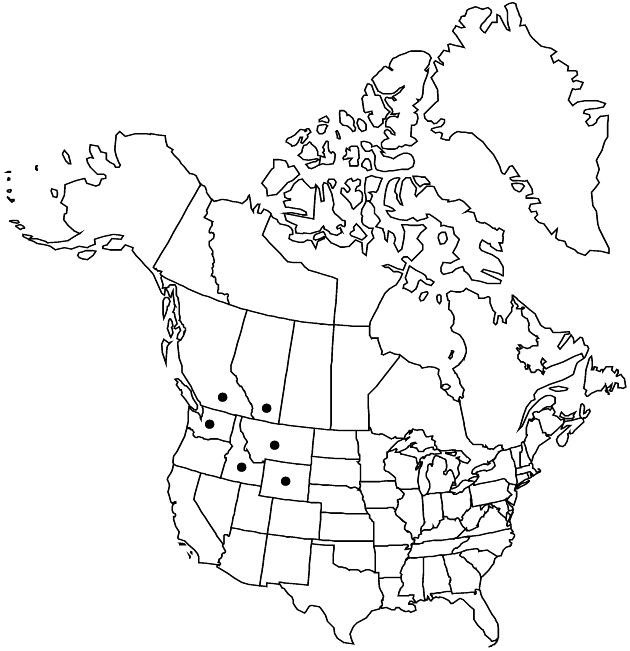Cirsium hookerianum
Trans. Amer. Philos. Soc., n. s. 7: 418. 1841.
Biennials or monocarpic (sometimes polycarpic?) perennials, 20–150 cm; taprooted. Stems usually 1 and erect, less commonly several and ascending, simple to sparingly short-branched in distal 1/2, variably villous with jointed trichomes, and/or finely arachnoid, or ± glabrate; branches on distal stems 0–many, short, ascending. Leaves: blades linear-oblong to elliptic, 5–25 × 1–8 cm, subentire to coarsely dentate or deeply pinnatifid, lobes lance-oblong to broadly triangular, spinulose to spiny-dentate or shallowly lobed, main spines 2–10 mm, abaxial faces usually ± densely gray- or white-tomentose with felted arachnoid trichomes, ± villous to tomentose along major veins with septate trichomes, sometimes glabrous or glabrate, adaxial ± green, glabrous to thinly arachnoid, often ± villous or tomentose with septate trichomes; basal often present at flowering, spiny winged-petiolate or sessile; principal cauline well distributed, proximally winged-petiolate, distally sessile, gradually reduced, bases sometimes short-decurrent; distal ± reduced, often narrower than proximal, sometimes with non-pigmented bases, sometimes pectinately spiny. Heads 1–many, borne singly or crowded in spiciform, racemiform, subcapitate, or sometimes more openly branched corymbiform arrays. Peduncles 0–8+ cm. Involucres (green or often purplish), broadly ovoid, 2–3.3 × 1.5–4 cm, loosely to densely villous with septate trichomes to tomentose and/or arachnoid. Phyllaries in 4–8 series, imbricate to subequal, bases short-appressed, entire, abaxial faces with or without narrow glutinous ridge, apices stiffly spreading to ascending, linear, long, plane, spines straight, slender, 3–5 mm; apices of inner flexuous, sometimes expanded and erose. Corollas white, ochroleucous, or occasionally pink, 20–28 mm, tubes 10–13 mm, throats 6.5–9 mm, lobes 5–7 mm; style tips 3–5.5 mm. Cypselae dark brown, 5–6.5 mm, apical collars not differentiated; pappi 18–22 mm. 2n = 34.
Phenology: Flowering summer (Jun–Sep).
Habitat: Moist soil, grasslands, aspen parkland, forest edges and openings, subalpine, alpine meadows
Elevation: 600–2900 m
Distribution

Alta., B.C., Idaho, Mont., Wash., Wyo.
Discussion
Cirsium hookerianum occurs from the Canadian Coast Ranges of British Columbia east to the northern Cascade Range and the northern Rocky Mountains. The relationship between C. hookerianum, C. kelseyi, which I have tentatively included in C. hookerianum, and C. longistylum needs further investigation. A case could be made for including all three in an expanded concept of C. hookerianum, but more investigation of the variation patterns is needed before this is done. Certainly C. kelseyi is better treated within or as a close ally of C. hookerianum than in C. scariosum (var. scariosum), where R. J. Moore and C. Frankton (1974) synonymized it. Cirsium hookerianum is known to hybridize with C. undulatum.
Selected References
None.